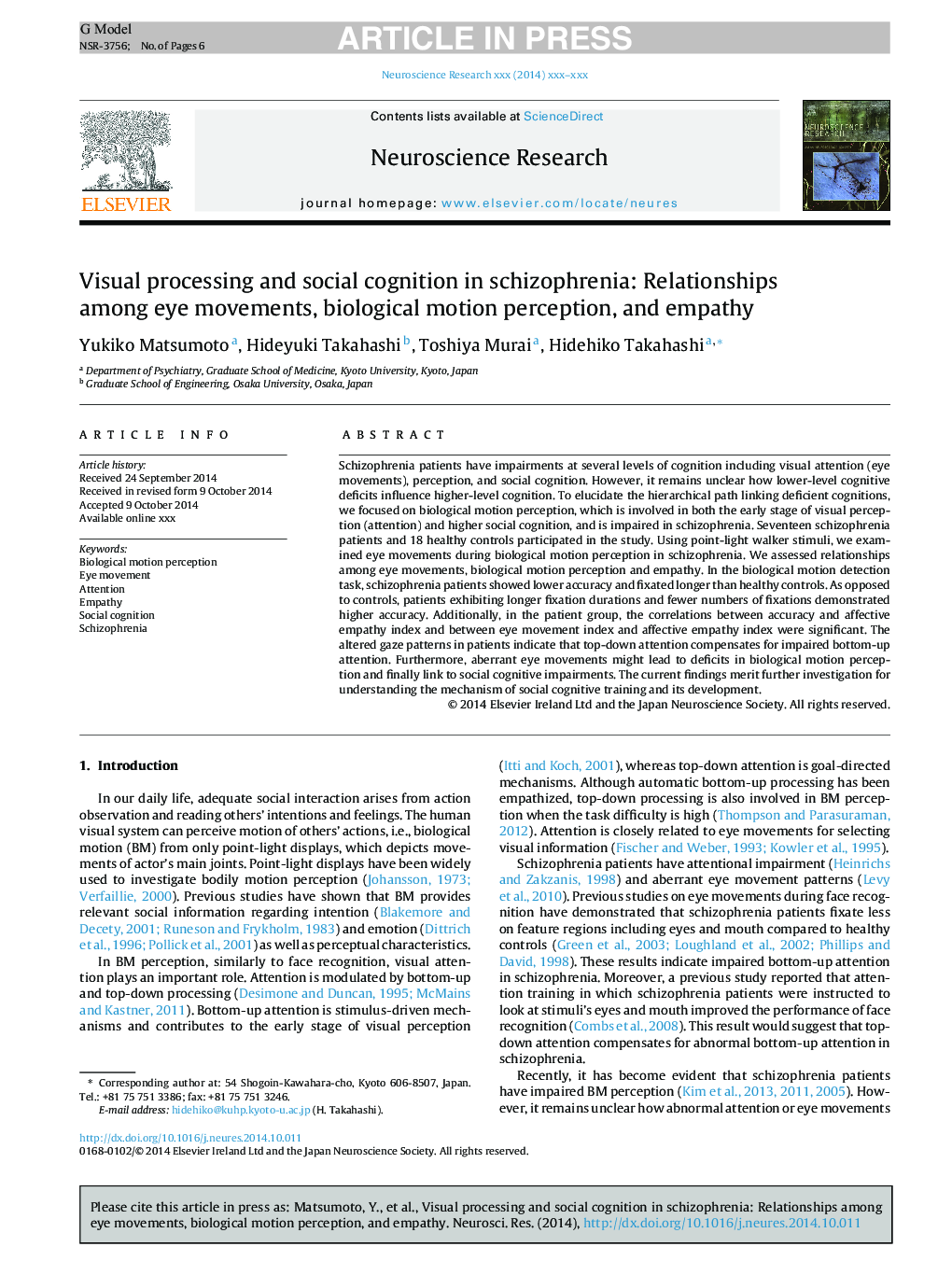| Article ID | Journal | Published Year | Pages | File Type |
|---|---|---|---|---|
| 6286176 | Neuroscience Research | 2015 | 6 Pages |
Abstract
Schizophrenia patients have impairments at several levels of cognition including visual attention (eye movements), perception, and social cognition. However, it remains unclear how lower-level cognitive deficits influence higher-level cognition. To elucidate the hierarchical path linking deficient cognitions, we focused on biological motion perception, which is involved in both the early stage of visual perception (attention) and higher social cognition, and is impaired in schizophrenia. Seventeen schizophrenia patients and 18 healthy controls participated in the study. Using point-light walker stimuli, we examined eye movements during biological motion perception in schizophrenia. We assessed relationships among eye movements, biological motion perception and empathy. In the biological motion detection task, schizophrenia patients showed lower accuracy and fixated longer than healthy controls. As opposed to controls, patients exhibiting longer fixation durations and fewer numbers of fixations demonstrated higher accuracy. Additionally, in the patient group, the correlations between accuracy and affective empathy index and between eye movement index and affective empathy index were significant. The altered gaze patterns in patients indicate that top-down attention compensates for impaired bottom-up attention. Furthermore, aberrant eye movements might lead to deficits in biological motion perception and finally link to social cognitive impairments. The current findings merit further investigation for understanding the mechanism of social cognitive training and its development.
Related Topics
Life Sciences
Neuroscience
Neuroscience (General)
Authors
Yukiko Matsumoto, Hideyuki Takahashi, Toshiya Murai, Hidehiko Takahashi,
